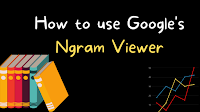How I Dubbed My Video About Creating a Professional Development Series
If you’re subscribed to my YouTube channel, you probably noticed that
my latest video was dubbed into Spanish. No, I didn’t suddenly become fluent in Spanish (Clinton was in office during my last attempts at speaking in Spanish). I was able to dub the video into Spanish by using a new service called Aloud.
Aloud is a new Google service that is still in development. I was selected for early access to it. The video that you saw appear on my YouTube channel was the first of three that I’m going to dub. The video is embedded below for your review.
The process of using Aloud was very easy. I simply uploaded a video for dubbing and within about 24 hours I got an email saying that a translated transcript was ready for my review. I reviewed it and made some adjustments then resubmitted for dubbing. The dubbed version of the video was delivered in about 48 hours. Along with the dubbed video I received a translated title and description to use when I published the video on my YouTube channel.
Applications for Education
Once it leaves the closed beta period, Aloud could be a great tool for teachers who are creating video lessons and need or want them to be available in other languages.
I realize that this post is light on details regarding how the transcription and dubbing take place. Unfortunately, while I know some of those details, I’m not able to share them publicly at this time.




